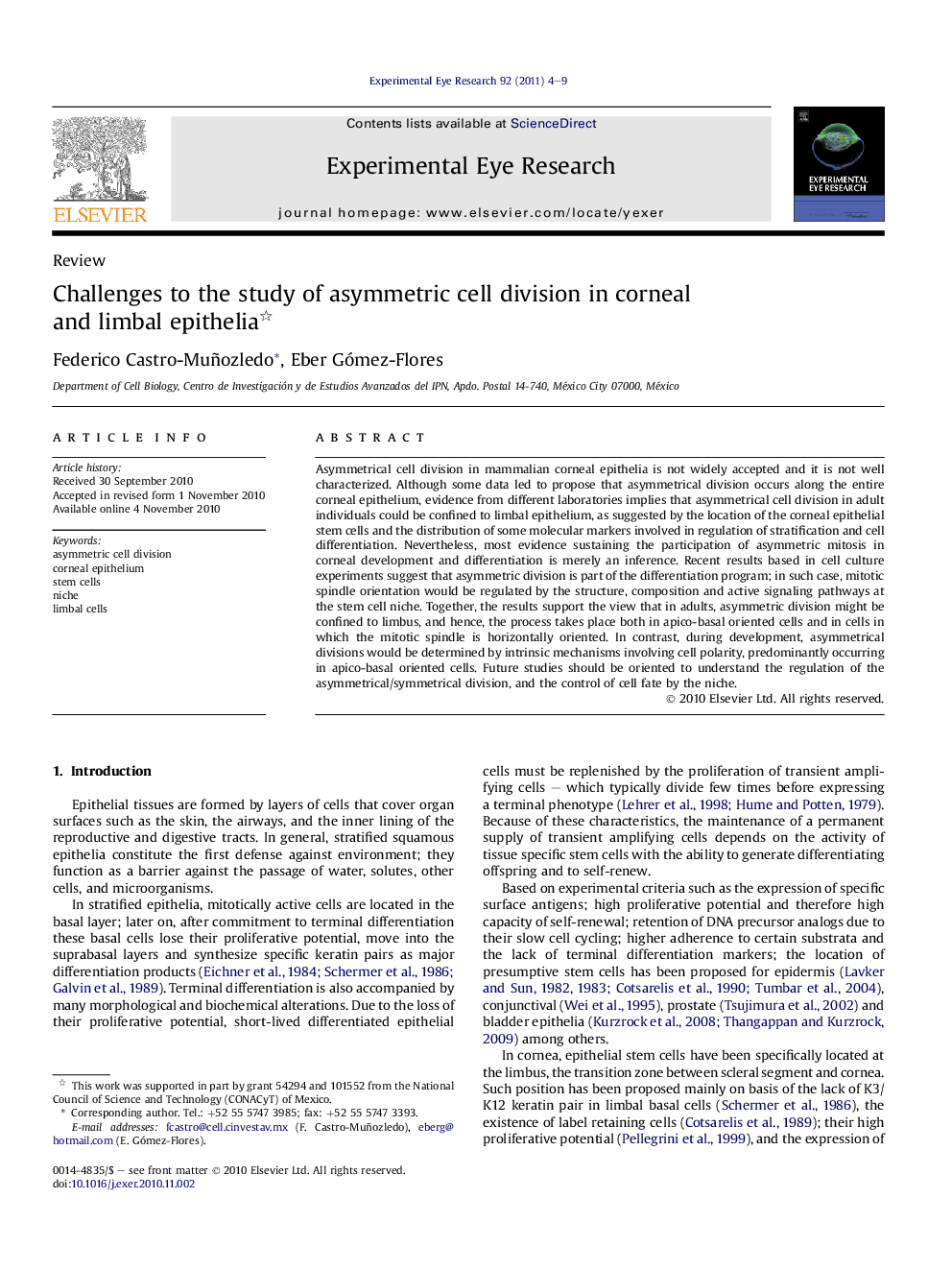| Article ID | Journal | Published Year | Pages | File Type |
|---|---|---|---|---|
| 6197479 | Experimental Eye Research | 2011 | 6 Pages |
Asymmetrical cell division in mammalian corneal epithelia is not widely accepted and it is not well characterized. Although some data led to propose that asymmetrical division occurs along the entire corneal epithelium, evidence from different laboratories implies that asymmetrical cell division in adult individuals could be confined to limbal epithelium, as suggested by the location of the corneal epithelial stem cells and the distribution of some molecular markers involved in regulation of stratification and cell differentiation. Nevertheless, most evidence sustaining the participation of asymmetric mitosis in corneal development and differentiation is merely an inference. Recent results based in cell culture experiments suggest that asymmetric division is part of the differentiation program; in such case, mitotic spindle orientation would be regulated by the structure, composition and active signaling pathways at the stem cell niche. Together, the results support the view that in adults, asymmetric division might be confined to limbus, and hence, the process takes place both in apico-basal oriented cells and in cells in which the mitotic spindle is horizontally oriented. In contrast, during development, asymmetrical divisions would be determined by intrinsic mechanisms involving cell polarity, predominantly occurring in apico-basal oriented cells. Future studies should be oriented to understand the regulation of the asymmetrical/symmetrical division, and the control of cell fate by the niche.
Research highlights⺠Asymmetrical division seems to occur along the entire corneal epithelium. ⺠However, research on asymmetric division in corneal surface is scarce. ⺠Recent results suggest that asymmetric divisions are restricted to limbus. ⺠In vitro, asymmetric division appear to occur regardless mitotic spindle orientation. ⺠Research should be oriented to understand how the niche controls asymmetric division.
